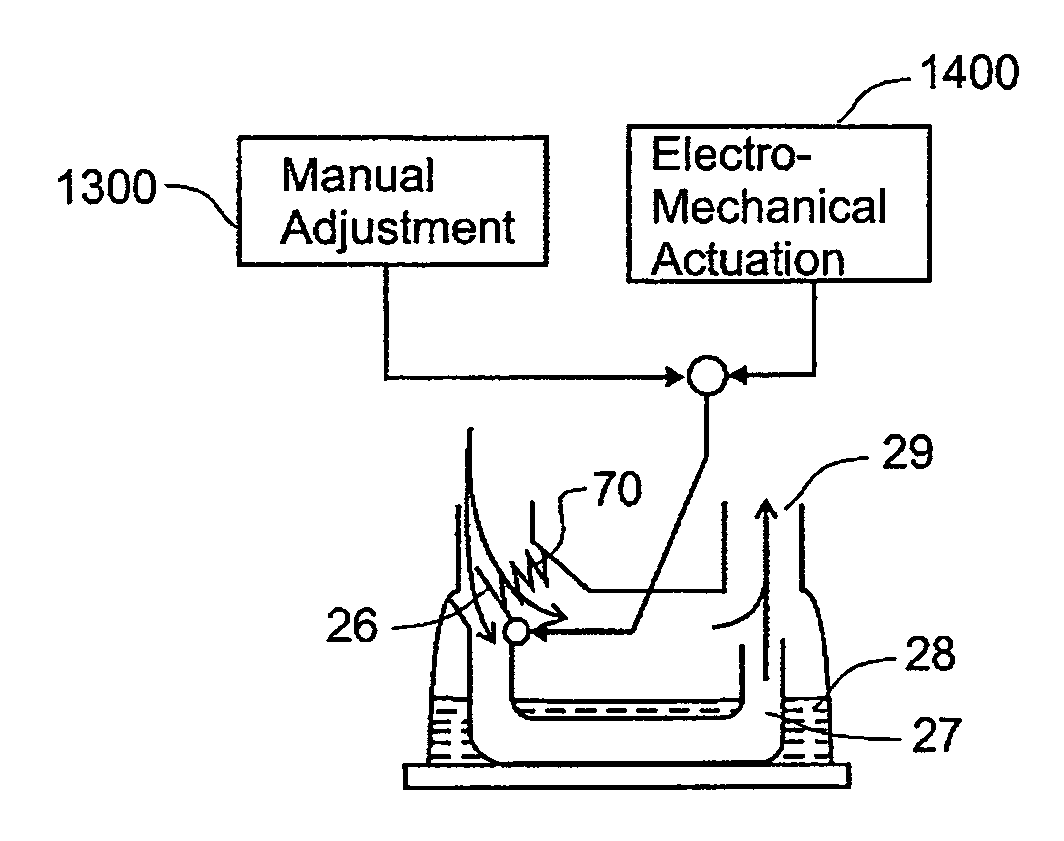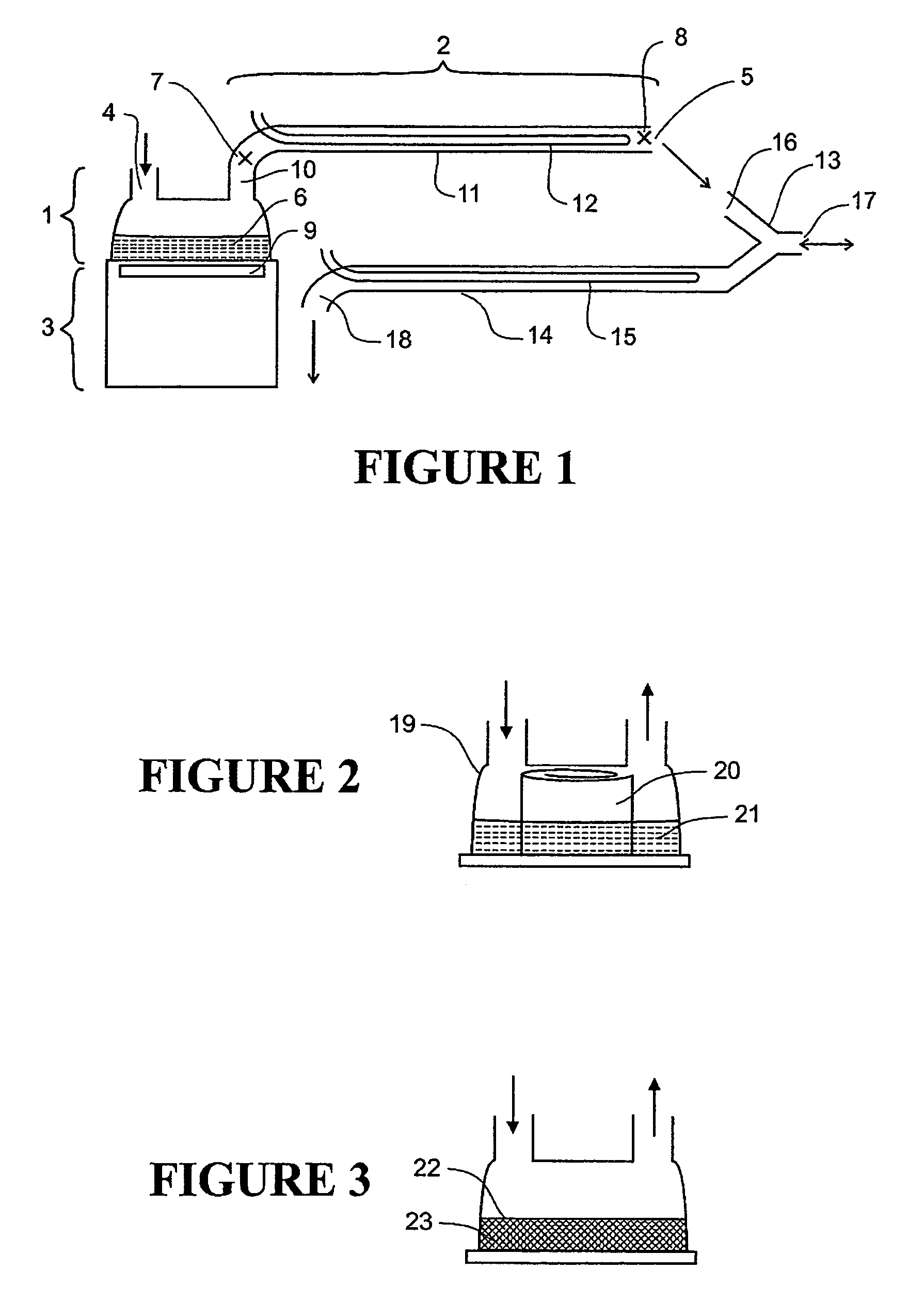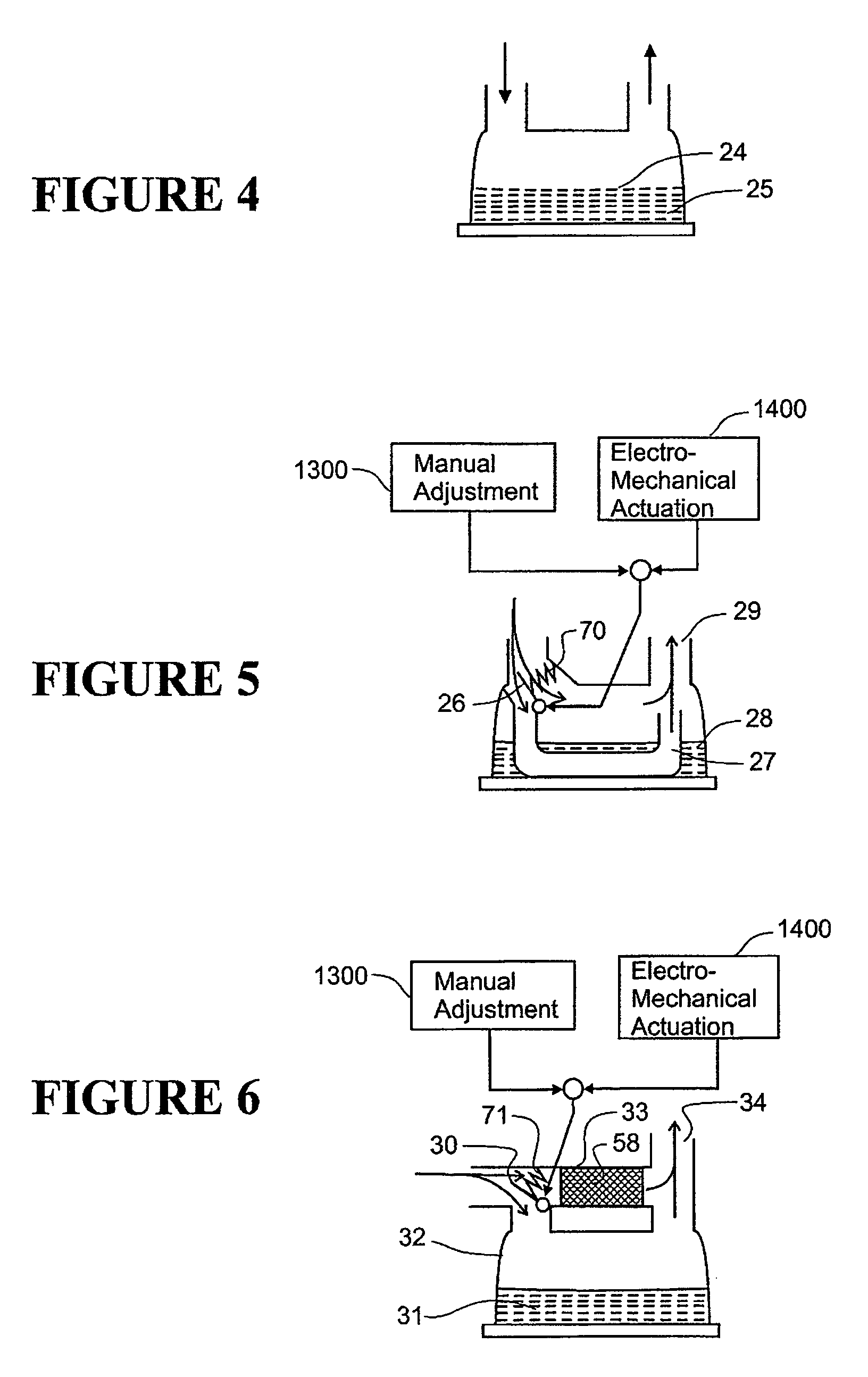Humidifier with parallel gas flow paths
a gas flow path and humidifier technology, applied in the field of humidification systems, can solve the problems of introducing weight, heat and complexity near the patient, reducing the efficiency of humidification, so as to minimise the condensation rate of vapour and reduce the rate of heat energy loss
- Summary
- Abstract
- Description
- Claims
- Application Information
AI Technical Summary
Benefits of technology
Problems solved by technology
Method used
Image
Examples
Embodiment Construction
[0061]FIG. 1 illustrates a typical respiratory humidification system, comprised of three parts:[0062]1) a humidification chamber located at a distance from the patient, which heats and substantially saturates gases flowing through it;[0063]2) a delivery system consisting of a flexible tube which carries humidified gases from the humidification chamber 1 to the gas outlet 5; and[0064]3) a heater base which heats the humidification chamber 1 and provides measurement and control functions.
[0065]The gas to be humidified flows into the chamber 1 from port 4 and leaves the delivery system 2 at gas exit port 5. Gas from exit port 5 flows to a patient via a face mask or similar (not shown). The system is controlled using sensors located at positions 7 and 8—typically temperature probes. Dry gases at the gas input 4 are heated and humidified by passing over the surface of hot water 6 in the chamber 1 so that they are substantially saturated with water vapour when they leave chamber 1 at exit...
PUM
 Login to View More
Login to View More Abstract
Description
Claims
Application Information
 Login to View More
Login to View More - R&D
- Intellectual Property
- Life Sciences
- Materials
- Tech Scout
- Unparalleled Data Quality
- Higher Quality Content
- 60% Fewer Hallucinations
Browse by: Latest US Patents, China's latest patents, Technical Efficacy Thesaurus, Application Domain, Technology Topic, Popular Technical Reports.
© 2025 PatSnap. All rights reserved.Legal|Privacy policy|Modern Slavery Act Transparency Statement|Sitemap|About US| Contact US: help@patsnap.com



